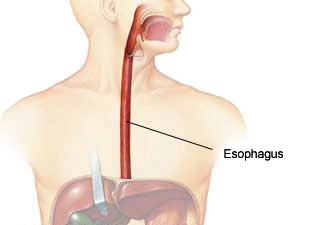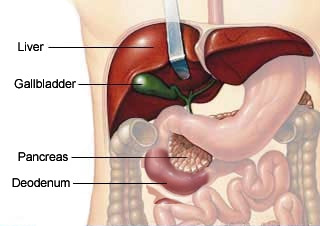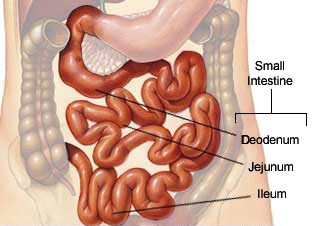The human gastrointestinal system (digestive system, GI tract, and alimentary canal) is a series of joined organs from the mouth to the anus. Gut includes the mouth, esophagus, stomach, pancreas, liver, gallbladder, small intestine, colon, and rectum. The role of the gut is to push food from the oral cavity (mouth) to the large intestine (colon), extract nutrients and absorb them across the various parts of the small intestines, and then excrete the waste in the form of stool. Thus, the gut is responsible for the digestion and absorption of ingested food and liquids which is essential for sustaining and protecting the overall health and wellness of our human system and to stay healthy. The importance of your digestive health cannot be undermined in determining the overall health of your body. The gut also host a variety of bacteria, which is termed as the gut flora or gut microbiota. This group of bacteria also play important functions in body systems such as digestion, immunity and metabolism, among a host of other roles.

Digestion is an important process in the human body for disintegrating food into macro and micronutrients which the body then absorbs and uses for energy, growth and cell repair. In this process, proteins are broken down to amino acids, fats broken down into fatty acids and glycerol, and carbohydrates broken down into simple sugars.
The process of digestion starts from the mouth. The chewing and biting of the food allows for easier penetration and mixing of the enzymes in saliva to begin the digestion process. The food is then passed to the stomach through the esophagus, where it further liquifies and digest the food through the action of the acidic gastric juices and enzymes present in the stomach. After the action of gastric juices and enzymes, stomach contents (also called as chyme in this stage) are slowly released to the small intestine. The chyme is further mixed and churned in the small intestine, where the pancreas and liver secrete enzymes into the small intestine to react with the chyme and further break it down to smaller particles, which are then absorbed into the bloodstream.

The mouth is the opening part of the digestive system where the process of digestion starts after the ingestion or consumption of food or any solid materials. Food or solid materials partly dissolves in saliva, with the action of chewing breaking down the food.
From the mouth, food that have been physically broken down is then passed into the pharynx towards the esophagus.

As the food reaches the esophagus, the food continues its journey down the gastrointestinal tract by the contractions of muscles (peristalsis), pushing and moving the food down to the stomach.

Stomach retains the food while it is being mixed with gastric acid and various enzymes secreted by the stomach cells, which further break down the food or solid materials. From the stomach, the broken contents (called chyme) are moved to the small intestine.

In the early stages of the small intestines (also called the duodenum), the chyme is mixed with digestive juices and enzymes secreted from the pancreas, liver and gallbladder.
Pancreas: Pancreas releases digestive enzymes which help to disintegrate proteins carbohydrate and fats.
Liver: Liver is also called as body's chemical factory. Bile a digestive enzyme produced by the liver into the small intestine which play a crucial role for digesting and absorption of fats.
Gall bladder: It serves as a reservoir for bile acids. When food enters into the small intestine, a certain hormone is released, which signals the gall bladder to contract and secrete the bile.

The small Intestine is a 22 feet long muscular tube which is divided into 3 segments: duodenum, jejunum, ileum. As the contents are received from the stomach, they get broken down in the small intestines by the various enzymes released by the pancreas and bile from the liver. The duodenum is responsible for breaking down the contents, whereas the ileum and jejunum are responsible for the absorption of water and nutrients. The broken contents stay for a longer period in the small intestine for better absorption into the bloodstream, and the undigested contents then move to the large intestine (colon).

The entire large intestine is a 6 feet long muscular tube that connects the small intestine to the rectum. The large Intestine is divided to 5 segments: the cecum (the beginning of the colon), ascending (right) colon, transverse (across) colon, descending (left) colon and sigmoid colon. The solid waste contents are passed to the large intestine from small intestine by the process of peristalsis. As the contents travel through the large intestine to the rectum, more water and nutrients are absorbed, and this in turn forms stools. For healthy humans, it takes approximately 36 hours for the stools to get through the large intestine, towards the rectum.
The rectum connects the colon to the anus. Once the stool moved towards the rectum from the colon, the process of evacuation from the human system happens. This process of evacuating the stools is controlled by the contraction and relaxation of sphincters.
The anus follows the rectum and is the last part of the digestive tract. It is controlled by sphincter muscles that are important in allowing control of stool. It also consists of pelvic floor muscles and two anal sphincters (internal and external muscle rings), which work together to stop stools from being released. The sphincter muscle is tight, except when stool enters the rectum. Both the voluntary and involuntary sphincters control the movement of stool during the process of excretion.
For optimal digestion process, the gut serves as a communication center to the brain. The brain helps to decide what, when, how much, and how fast to eat and drink. In turn, both the gut and brain play an important role in our stress level and state of mind. This interaction is termed as the 'gut-brain axis'.